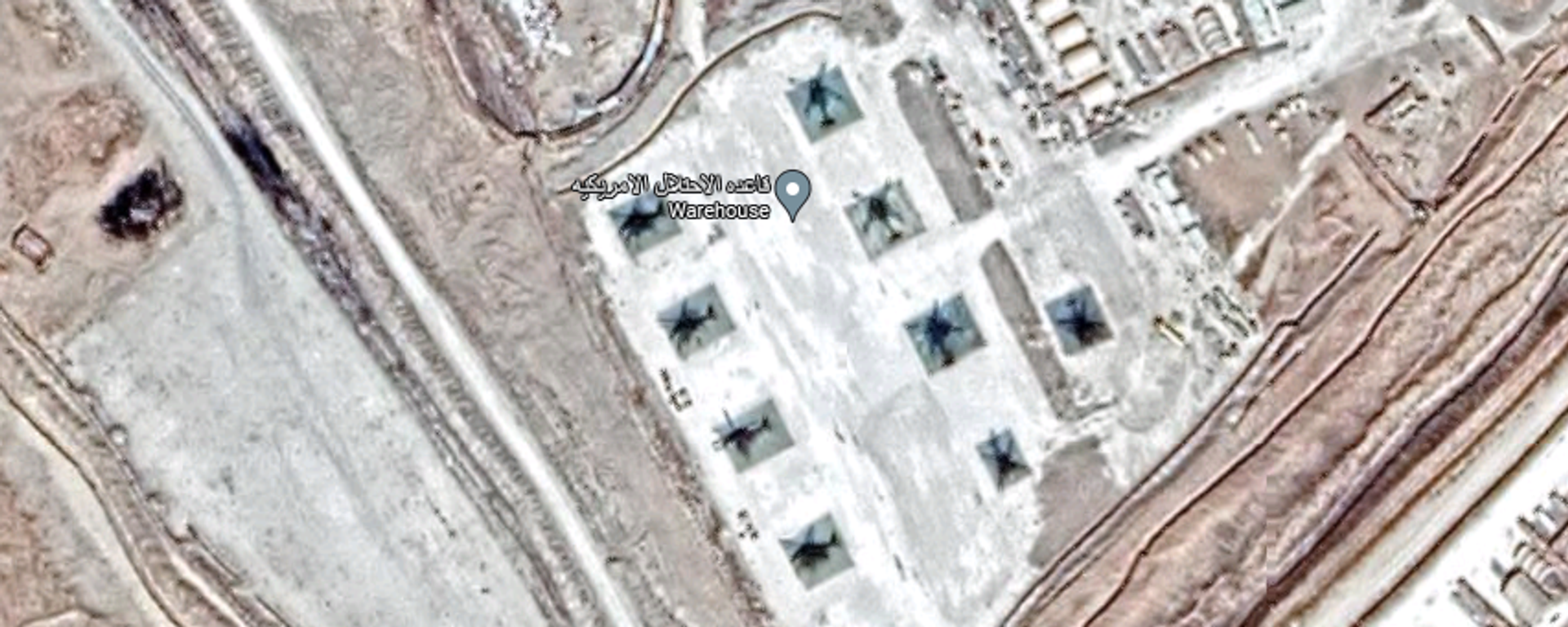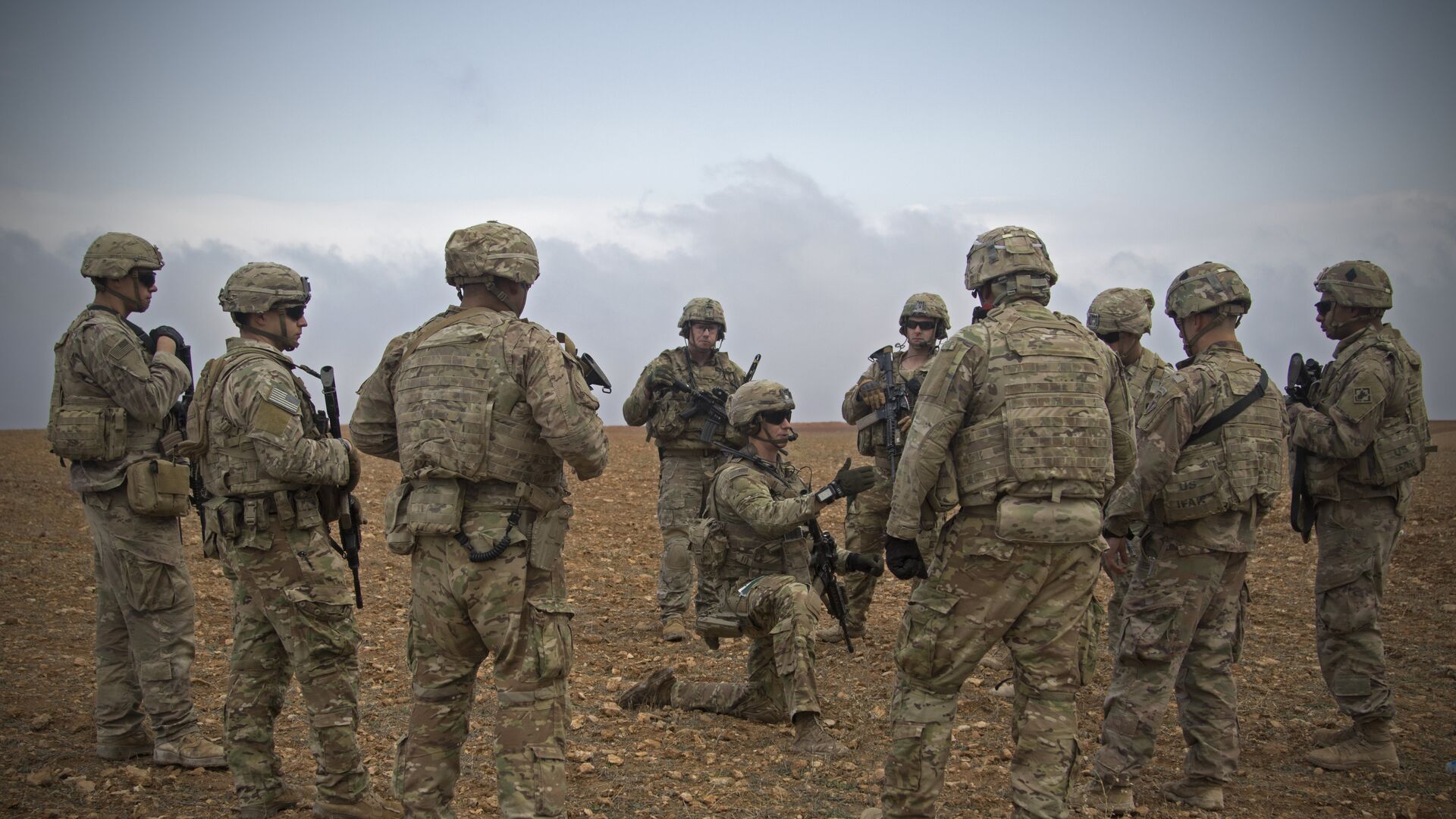https://sputnikglobe.com/20231106/growing-evidence-shows-how-artillery-fire-in-syria-iraq-left-us-troops-with-brain-damage-1114773978.html
Growing Evidence Shows How Artillery Fire in Syria, Iraq Left US Troops With Brain Damage
Growing Evidence Shows How Artillery Fire in Syria, Iraq Left US Troops With Brain Damage
Sputnik International
Mounting evidence has revealed how US soldiers have suffered debilitating mental health issues after being subjected to constant artillery fire campaigns in Syria and Iraq.
2023-11-06T23:33+0000
2023-11-06T23:33+0000
2023-11-06T23:32+0000
military
us
military & intelligence
iraq
syria
us military
brain damage
https://cdn1.img.sputnikglobe.com/img/107156/41/1071564125_0:0:5472:3078_1920x0_80_0_0_3d5f23f025fa583e5a3648ee6b21dcf1.jpg
Reporting in US media is drawing a link between mental health issues suffered by returning soldiers and the US military’s unprecedented reliance on long-range heavy arms fire in Iraq and Syria.Renewed attention to the issue comes amidst studies in recent years examining the effect of shockwaves from heavy weapons fire on the human brain.The phenomenon is likened to the emerging understanding of the traumatic brain injuries caused by repeated hits in American football.Reporting over the weekend profiled returning US service members from Iraq and Syria who suffer numerous maladies, including headaches, nightmares, memory loss, depression, anxiety, hallucinations, and suicidal ideation.Many soldiers cope with homelessness and chronic unemployment as a result of their conditions. One member of a Marine Corps gun crew committed suicide after suffering from years of headaches and depression. His team fired 7,188 artillery rounds in just a few months in Iraq.Another coped with bouts of psychosis after returning from Syria, hearing voices and suffering from hallucinations. He was ruled not guilty by reason of insanity after he broke into a stranger’s home and killed a man. He’s currently committed to a locked ward of a mental hospital in Minnesota.Key to the problem is the recent US strategy of relying on long-distance heavy arms fire in combat, especially during their intervention in the Syrian Civil War. The US military was sensitive to domestic opposition after unpopular campaigns in Iraq and Afghanistan, and US politicians never sold intervention in Syria to the public as they did with those conflicts.Military planners sought to achieve their objectives in Syria through heavy reliance on the use of artillery, which requires fewer soldiers than other forms of combat and risks fewer casualties from direct confrontation. Troops fired tens of thousands of shells there, numbers not seen since the Vietnam War. The artillery blasts are capable of lobbing 100-pound shells as far as 15 miles away, producing strong shockwaves in the process that affected entire military crews. The US Marine Corps undertook a study examining the issue, concluding in 2019 that US service members are indeed being harmed by the weapons, but interviews with soldiers suggest no safeguards have been enacted since.
https://sputnikglobe.com/20221020/over-500-us-military-members-commit-suicide-in-2021-upward-trend-since-2011-pentagon-1102472180.html
https://sputnikglobe.com/20231029/militants-ignore-bidens-warning-rain-down-fire-on-us-forces-in-iraq-syria-1114572582.html
iraq
syria
Sputnik International
feedback@sputniknews.com
+74956456601
MIA „Rossiya Segodnya“
2023
Sputnik International
feedback@sputniknews.com
+74956456601
MIA „Rossiya Segodnya“
News
en_EN
Sputnik International
feedback@sputniknews.com
+74956456601
MIA „Rossiya Segodnya“
Sputnik International
feedback@sputniknews.com
+74956456601
MIA „Rossiya Segodnya“
syria, iraq, us soldiers in the middle east, artillery fire
syria, iraq, us soldiers in the middle east, artillery fire
Growing Evidence Shows How Artillery Fire in Syria, Iraq Left US Troops With Brain Damage
Service members often suffer debilitating mental health problems that shatter lives and relationships. Reporting suggests the US military is aware of the problem but has done little to address it.
Reporting in
US media is drawing a link between mental health issues suffered by returning soldiers and the US military’s unprecedented reliance on long-range heavy arms fire in Iraq and Syria.
Renewed attention to the issue comes amidst
studies in recent years examining the effect of shockwaves from heavy weapons fire on the human brain.
Military guidelines once assumed there were no long-term effects from the strong blasts emitted when firing cannons, mortars, and shoulder-fired rockets. But an emerging consensus suggests microscopic damage to the brain caused by the frequent use of such weapons may have lasting deleterious consequences for mental and physical health.
The phenomenon is likened to the emerging understanding of the
traumatic brain injuries caused by repeated hits in American football.
Reporting over the weekend profiled returning US service members from Iraq and Syria who suffer numerous maladies, including headaches, nightmares, memory loss, depression, anxiety, hallucinations, and suicidal ideation.
Many soldiers cope with homelessness and chronic unemployment as a result of their conditions. One member of a Marine Corps gun crew committed suicide after suffering from years of headaches and depression. His team fired 7,188 artillery rounds in just a few months in Iraq.

20 October 2022, 16:43 GMT
Another coped with bouts of psychosis after returning from Syria, hearing voices and suffering from hallucinations. He was ruled not guilty by reason of insanity after he broke into a stranger’s home and
killed a man. He’s currently committed to a locked ward of a mental hospital in Minnesota.
Compounding the issue is the military’s lack of experience and knowledge in responding to such brain injuries. Service members suffering from more serious conditions are often misdiagnosed with post-traumatic stress disorder, attention-deficit disorder, or depression.
Those who violate behavioral codes are sometimes given an other-than-honorable discharge, which can deny them access to medical help or disability payments. For many, this can be the beginning of a steady downward spiral.
Key to the problem is the recent US strategy of relying on long-distance heavy arms fire in combat, especially during their intervention in the Syrian Civil War. The US military was sensitive to domestic opposition after unpopular campaigns in Iraq and Afghanistan, and US politicians never sold intervention in Syria to the public as they did with those conflicts.
Military planners sought to achieve their objectives in Syria through heavy reliance on the use of artillery, which requires fewer soldiers than other forms of combat and risks fewer casualties from direct confrontation.
Troops fired tens of thousands of shells there, numbers not seen since the Vietnam War. The artillery blasts are capable of lobbing 100-pound shells as far as 15 miles away, producing strong shockwaves in the process that affected entire military crews.
The US Marine Corps undertook a study examining the issue, concluding in 2019 that US service members are indeed being harmed by the weapons, but interviews with soldiers suggest no safeguards have been enacted since. 
29 October 2023, 11:58 GMT
“I gave the Marine Corps everything,” said one retired service member. “And they spit me out with nothing. Damaged, damaged, very damaged.”
The US military invaded Iraq in 2003 amidst unfounded claims that Iraqi President Saddam Hussein possessed weapons of mass destruction. Some sources estimated the invasion resulted in more than 1 million excess deaths in the country.
Meanwhile, the US has intervened in the Syrian Civil War since 2014, seeking to help overthrow the country’s leader Bashar al-Assad. The US Central Intelligence Agency committed over $1 billion to help train Syrian rebels, one of the most expensive known operations ever undertaken by the agency.






